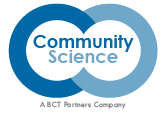Resistance is a natural human response to change. As facilitators of necessary conversations, resistance is a healthy part of the organizational change process when adequately managed. The ability to recognize and address resistance is critical for facilitators of organizational change. When managed effectively, it can strengthen the organization. However, if ignored, the resistance within the organizational change process could derail the process. Since we know that resistance is inevitable in any organizational change process, and not just those focused on equity, rather than removing resistance, do the work to engage and manage resistance effectively to move toward the ultimate goal—advancing equity.
When embarking on your journey, know that it starts with your preparation. Begin by asking yourself— are you ready to engage in necessary conversations? Here are a few of the lessons we have learned in our work together so far:
- Take a root-cause approach. Before engaging, take a moment and pause to understand the type of resistance you are encountering. Rather than ostracizing the person demonstrating resistance as if you are putting out a fire, identify the cause of the resistance. The end goal is not to force people into submission—the desire to make people obey leads to a completed process that is not sustainable.
- Relationships are more impactful than any tool. Not all relationships start from the same point of familiarity. Map out your ecosystems of relationships within the organization, know where you do and do not influence it.
- Don’t label people resistors; call in people in. The fact that expressions of resistance are present does not mean a person is necessarily anti-equity. Equity change can provoke feelings of guilt, shame, and even a sense of loss or safety. Stay curious by asking questions to understand why there may be resistance.
- Stay focused on the ultimate goal. Never stop communicating your organization’s equity strategy; share how leaders and staff contribute to bringing it into focus.
- Of course, there is resistance! Take time to learn how to disagree with others or your teams, so that you can learn what the authentic agreement looks and feels like by understanding the intentionality behind the resistance exhibited.
In the end, the goal is to expand the circle of belonging for staff and leaders to imagine what can be possible by leading with equity. One step to building the capacity of your organization to imagine “what if” scenarios as a tool to create a systematic way to assess your perceived risk, map out the necessary conversations to frame the range of entry points to the conversation that may ‘unfreeze’ leaders, managers, and staff in your organization.
About the Authors
Dr. Amber Trout has deep expertise in organizational and leadership development, change management, and capacity building in the nonprofit and philanthropic sectors. She has extensive knowledge, skills, and experience in community and housing development. Amber is an experienced facilitator and organizational consultant in racial equity and organizational change efforts to promote system-wide transformation at leadership, organization, and community levels.
Dr. Jasmine Williams-Washington is an Associate, specializing in the implementation and evaluation of community organizing and organizational capacity building initiatives. Her organizational capacity building strategy is grounded in community organizing principles, using community and organizational power to make systemic change. She also has experience in quantitative and qualitative data analyses, specifically with thematic and grounded theory analyses. Professionally, she has a variety of experience with evaluations including, developmental, summative, and programmatic evaluations.
